Look! There in the comics! It’s Gregory Reed!
As is well documented here at the ol’ 13th Dimension, I was a kid with an abiding love of Batman ’66. It was my gateway to the Caped Crusader and the wider world of comics.
Now, The Adventures of Superman was also in syndication when I was growing up in the ’70s but for whatever reason, I never found the show to be as thrilling. I liked George Reeves’ Man of Steel, I guess, but thought he was a little dull and I wouldn’t actually learn to appreciate Superman himself until Christopher Reeve put on the cape.
But here’s the funny thing: I’ve recently started watching The Adventures of Superman on the DC Universe app and, man, am I really digging it, especially the black-and-white episodes. (Happy to say, my 20-year-old son likes it as much – if not more – than I do.)
George Reeves was effortlessly cool – an underrated quality in any actor – and I love the noirish feel of those early years. (I’ll catch up to the color eps soon enough.)
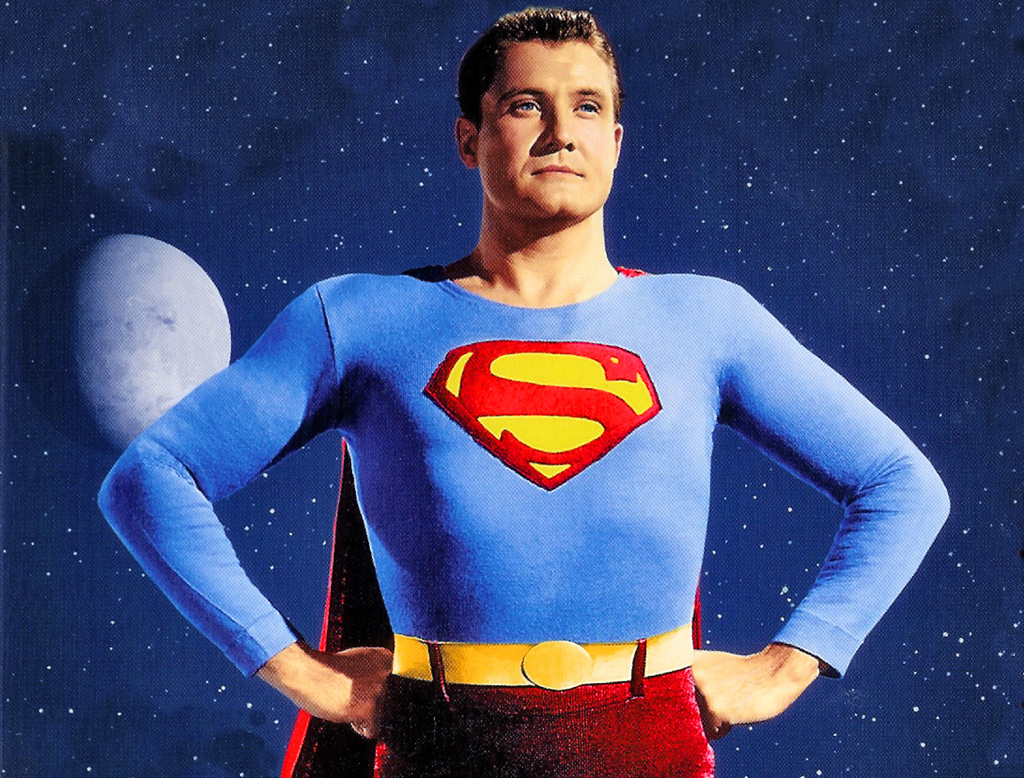
I kind of feel like I owe the late Reeves a bit of a metaphorical apology because I always took him for granted. Now, in middle age, I’m starting to understand why he so inspired the kids who were in the generation behind me.
I bring all this up because when I was perusing Back Issue #117 – out Nov. 13 – for our regular EXCLUSIVE EXCERPT, I happened upon Philip Schweier’s charming history of Gregory Reed, a character loosely based on Reeves who popped up in Superman’s Bronze Age adventures.
Perfect timing.
Now why is the piece in this issue? Well BI #117’s theme is “Superhero Stand-Ins” – such as Beta Ray Bill, John Stewart and many others.
Check out the cover …
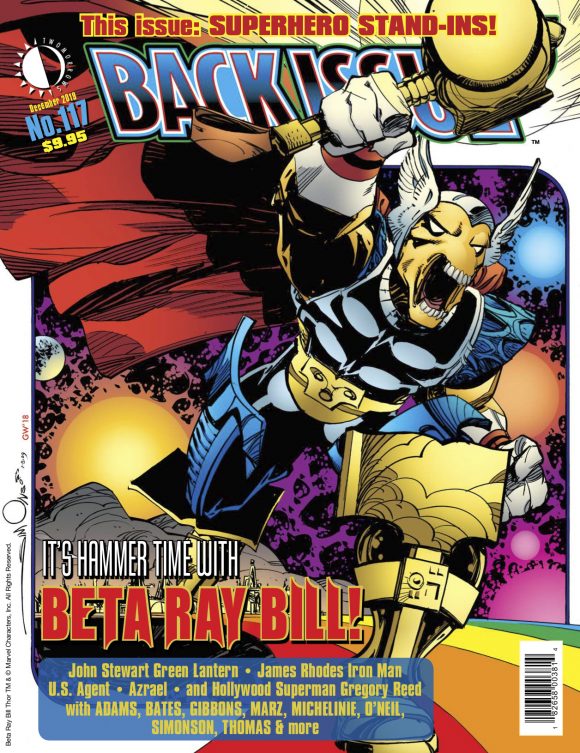
and table of contents:
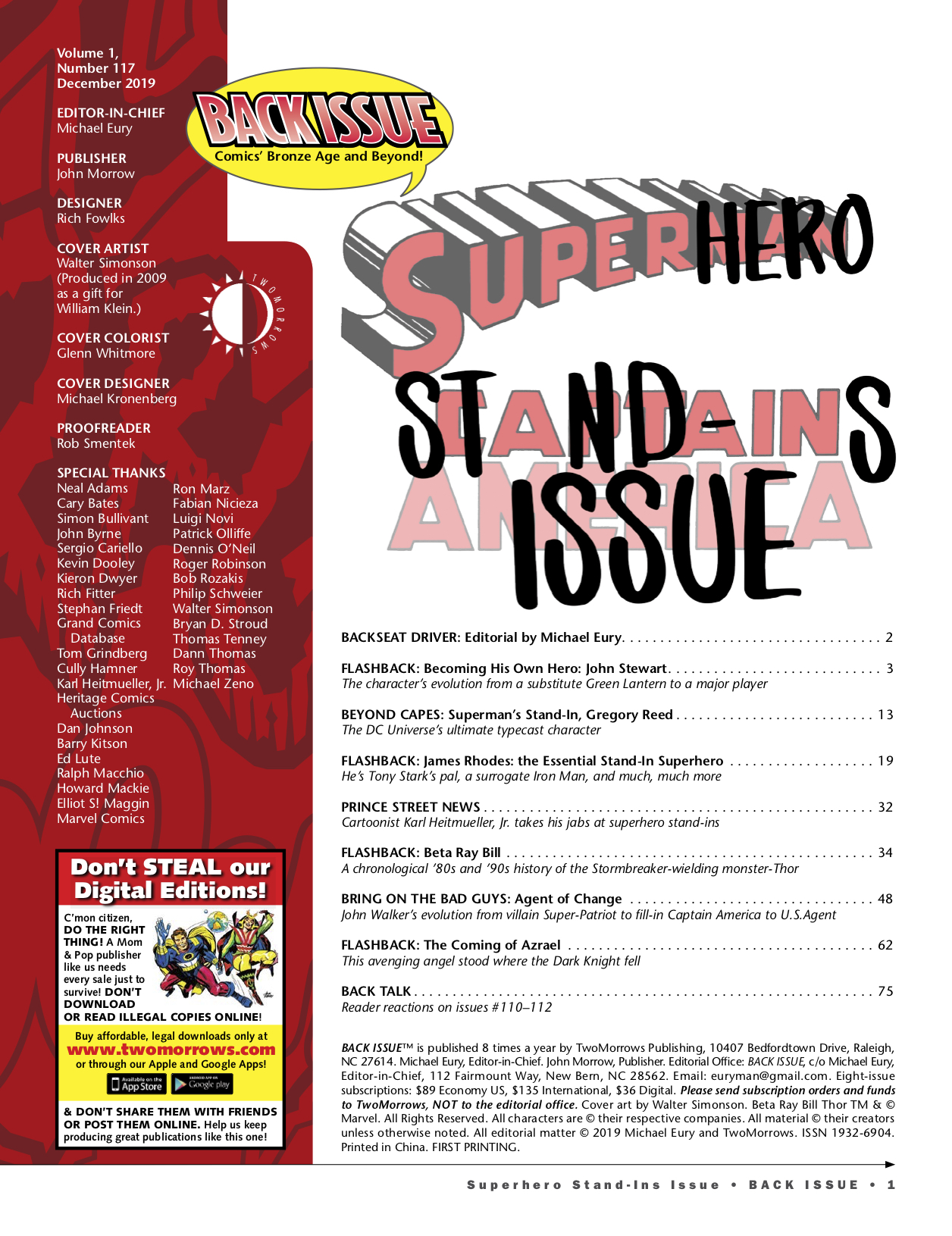
Anyway, here’s a truncated (and slightly tweaked) version of Schweier’s piece – but, as always, be sure to pick up BI #117 for the more detailed version, as well as all the other funky features the issue provides.
Up, up and away!
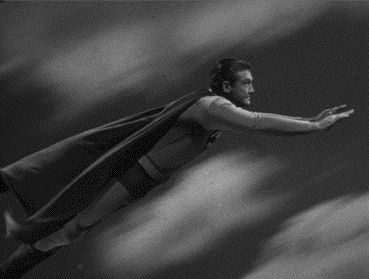
—
By PHILIP SCHWEIER
There’s no denying the impact The Adventures of Superman (1952–1958) has had in the comic-book world. The TV show has been broadcast continuously for decades, cultivating generations of Superman fans. For many, actor George Reeves was their first exposure to the Man of Steel.
“For me and millions of other kids in the 1950s,” says long-time Superman writer Cary Bates, “Reeves became an icon who embodied all the noble and heroic traits that defined Superman. His image was so unassailable, none of us seemed to notice our Man of Steel was in fact a slightly paunchy 40-something man wearing shoulder pads.”
Bates’ frequent compadre in the comic-book trenches, Elliot S! Maggin, agrees. Throughout the 1970s, they wrote many of the Man of Steel’s adventures. “Reeves brought interpretations and nuance to the character of which only Superman’s creators had been aware before. He was a consummate actor, living every bit as much in any given moment as a gifted stage performer— and playing a character who just didn’t occur in nature to boot. Not many people can pull off a role like that.”
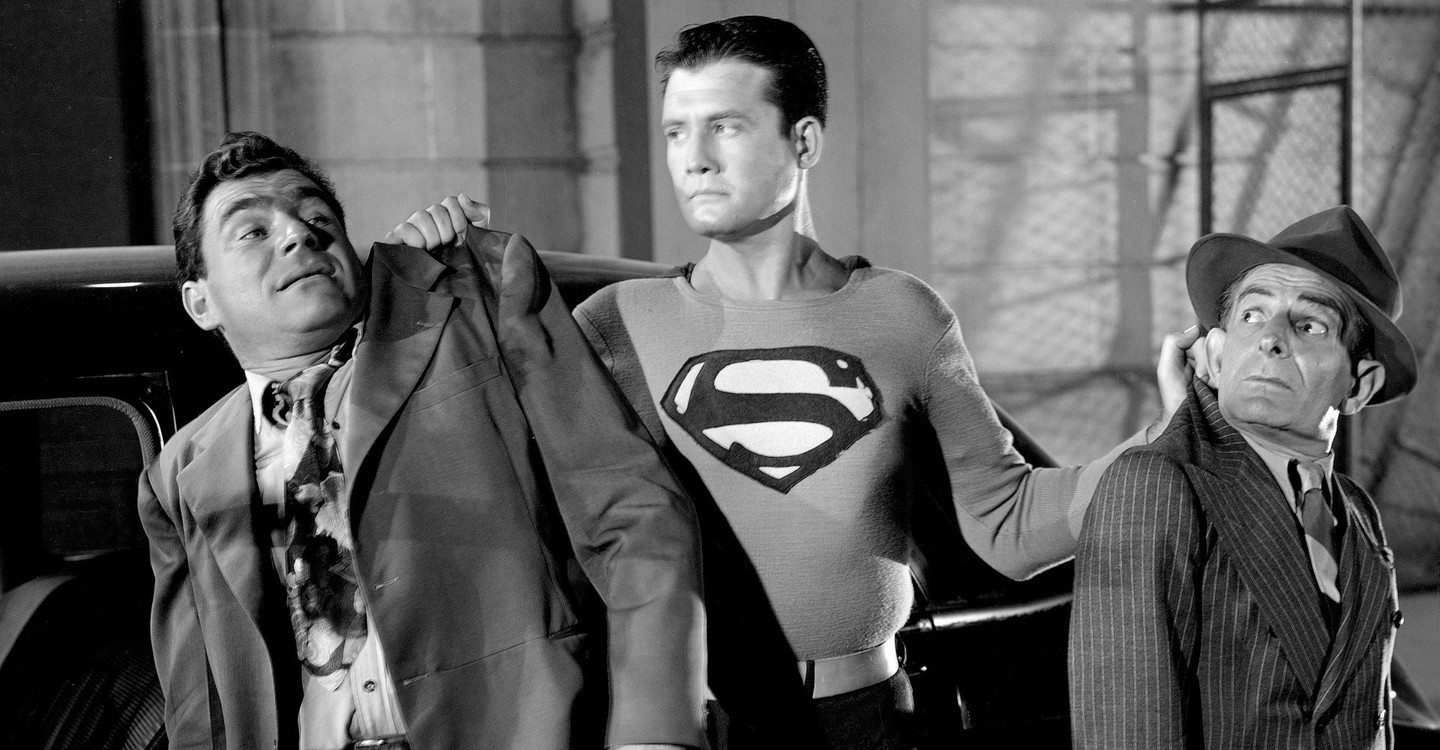
A STAR IS BORN
In 1972, Reeves’ influence made its way to Superman’s comic-book world, in the form of supporting player Gregory Reed. The thinly veiled homage to Reeves was the product of late-night meetings at the Hilltop Diner in Queens, where Bates and Maggin shared story ideas.
“We worked closely like that from the time Cary got an apartment a block away from mine and for a couple of years after that,” Maggin says, though he offers the lion’s share of Reed’s development to Bates. “Cary used the character first, so obviously it’s his creation.”
In Action Comics #414 (July 1972), Bates wrote Superman vs. Superstar, with art by Curt Swan and Murphy Anderson. The story opens with a would-be bank robber challenging the Man of Steel. However, when an escaped tiger approaches, Superman panics, until a second Superman arrives to handle the big cat. It is quickly revealed the robbery scene is just that— a scene from a movie being filmed. Gregory Reed, the costumed actor, retires to his trailer, angry at being upstaged by the real Superman.
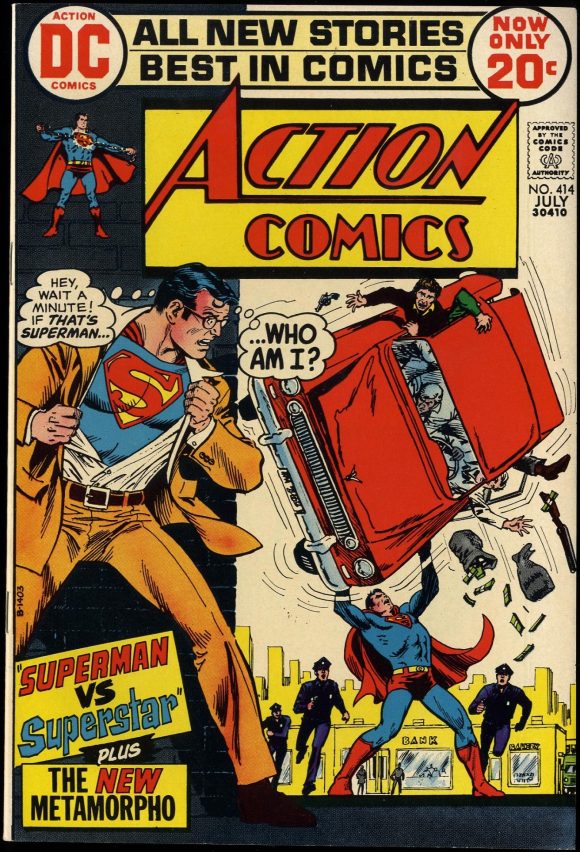
Nick Cardy cover
Reed had built a film career as the Man of Steel, but was disfigured when a stunt went tragically wrong. The studio managed to keep his scars a secret, and thanks to a lot of Hollywood makeup and costuming, portraying Superman is Reed’s only career option. Blaming Superman for derailing his life and career, the embittered actor seeks out the dark powers of magic. He lures Superman to his home to apologize for his earlier rude behavior, and uses sorcery to trap Superman and exchange bodies. Now gifted with superhuman abilities, he’s ready to trade lives with the weakened hero, leaving Superman to continue the life of a disfigured movie star.
But Superman notices a magic symbol on the palm of his (formerly Reed’s) hand, and deduces the mind switch happened as a result of them shaking hands. When Reed is unable to control his new powers, the ceiling collapses, trapping Superman beneath the rubble. He reaches out to Reed, who instinctively takes Superman’s hand to pull him to safety, causing their minds to switch back to their proper bodies. After subduing his foe, Superman promises to use Kryptonian science to heal Reed’s weakened form.
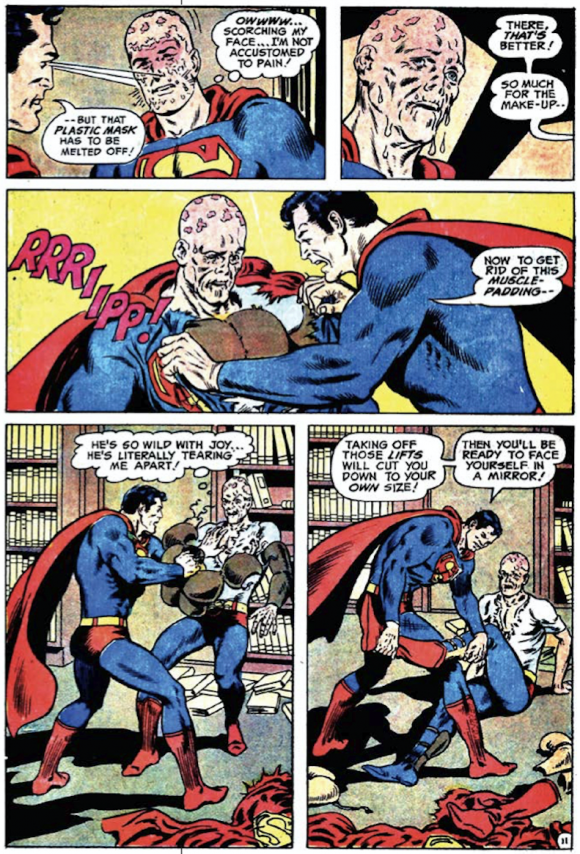
Curt Swan pencils, Murphy Anderson inks
—
A SEQUEL
Three years later, Reed returned in Action Comics #445 (March 1975). Superman has made good on his promises to help heal Reed in mind and body, and the actor now proudly embraces the role for which he is famous.
Maggin recalls Reed’s redemption came about as a result of encounters with people who were involved with the old TV show. “The story was that George committed suicide because supposedly he was typecast and depressed about his career,” he explains. “It turns out that was just something his friends agreed they’d say to justify this fictional suicide. He was generally a happy, accomplished guy with only good things on the horizon for his career. Cary and I learned this, and consequently we changed the character’s attitude so it better reflected George Reeves’ outlook.”
—
SUMMER BLOCKBUSTERS
By 1977, production of Superman: The Movie starring Christopher Reeve was underway, and Gregory Reed became a popular supporting player in the Superman titles. “Most of what we did with our stories was a product of whatever we were thinking about at the time,” explains Maggin. “I think probably our imaginations were fed by the prospect of a new guy playing Superman in such a high-profile environment.”
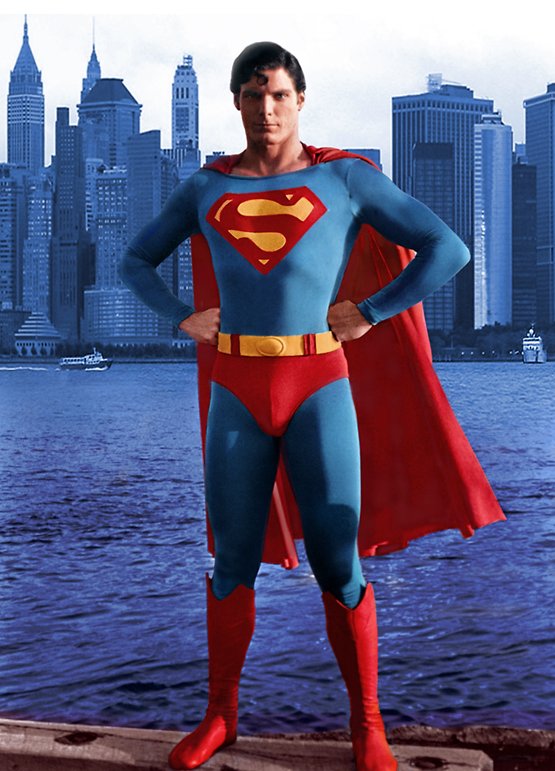
“It made sense to me that there would be movies or a TV series made about Superman,” says writer Bob Rozakis, who featured Reed in The Secret Society of Super-Villains #7 (May-June 1977). “Though he was very real in Metropolis, to much of the rest of the world, he was an almost-mythical character.”
He admits the then-coming movie played a part in his plot. “Having the other villains attack the faux Man of Steel and think he was the real thing was part of the tongue-in-cheek approach I took to the story.”
While Gregory Reed may have started as an homage to George Reeves, the character was also a tribute to Christopher Reeve. “In my use of him,” says Rozakis, “he was an actor currently portraying the Man of Steel in a movie, so he was more Chris than George.”
The Reeves/Reeve connection struck Bates as a bit of cosmic synchronicity. “It didn’t seem as much of a stretch when we took things one step further and named our Superman actor “‘Reed.’”
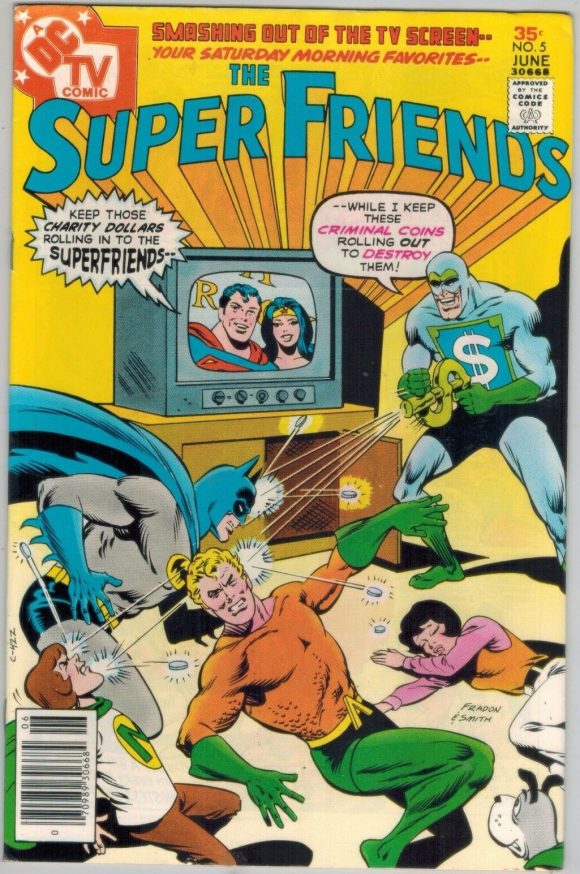
Ramona Fradon pencils, Bob Smith inks
Reed’s celebrity status was reinforced in the pages of Super Friends #5 (June 1977) in Telethon Treachery, by E. Nelson Bridwell, Ramona Fradon, and Bob Smith. Though he doesn’t actually appear in the comic book, Reed is among the DC Universe celebs scheduled to perform at a charity telethon hosted by the heroes.
“Bridwell was an outlandishly brilliant guy and a tremendous resource,” Maggin says. “He wasn’t just the keeper of the archives, but he seemed to know everything about everything.” His intimate knowledge of Superman lore—as well a variety of other subjects, from Shakespeare to botany—is legendary.”
“Maybe his use of Greg Reed was an endorsement,” Maggin muses. “We were each—everyone working on the character in any medium—ultimately a resource for the rest of us. I felt that was the way it should be. When you’ve got decades of traditional knowledge to draw on, you draw on it.”
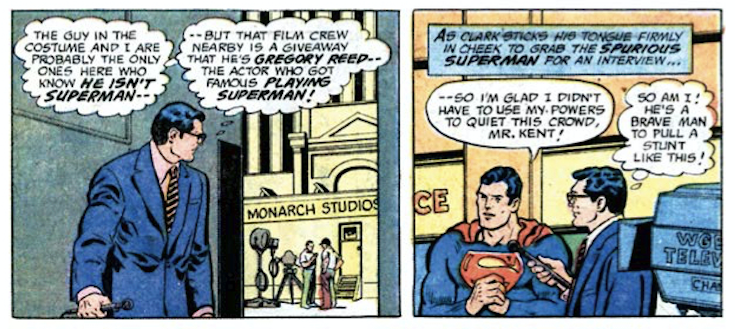
From Superman #297. Story by Bates and Maggin. Pencils by Swan. Inks by Bob Oksner and Bob Wiacek.
In retrospect, Bates suggests Gregory Reed was underutilized, never reaching his full potential. “Here we had a workman-like actor who was just collecting a paycheck to play the Superman role in a world where he would always come up short in comparison to the real Superman, who dominated the news every day. You’d think after a while that would take some kind of psychological toll. It just seems like there was rich fodder there where we could’ve gone much deeper into what made this guy tick.”
Perhaps his star-meter within the DC Universe faded for the same reason other actors fade into obscurity— typecasting. According to Rozakis, Reed was a secondary character from the beginning and served only two roles: either Superman actor cameo, or a decoy for Superman.
“Had one of us writers chosen to,” he says, “he might have been developed into a friend for Clark, a romantic interest for Lois or Lana, or any number of other plotlines.”
Maggin agrees: “We wanted Reed to be Superman’s pal—at least a familiar acquaintance—because we always felt that if Superman were a real guy, George Reeves would have hung out with him.”

—
Back Issue #117 is out Nov. 13. You can get can it at your local comics shop or directly through publisher TwoMorrows. (Click here.)
—
MORE
— GEORGE REEVES: A Birthday Salute. Click here.
— Here’s the SUPERMAN ’55 Comic That DC Needs to Publish. Click here.

November 9, 2019
George Reeves’ legacy will be everlasting.
November 13, 2019
George Reeves was a fantastic Superman. He brought a wealth of seemingly effortless charm and charisma to the role.